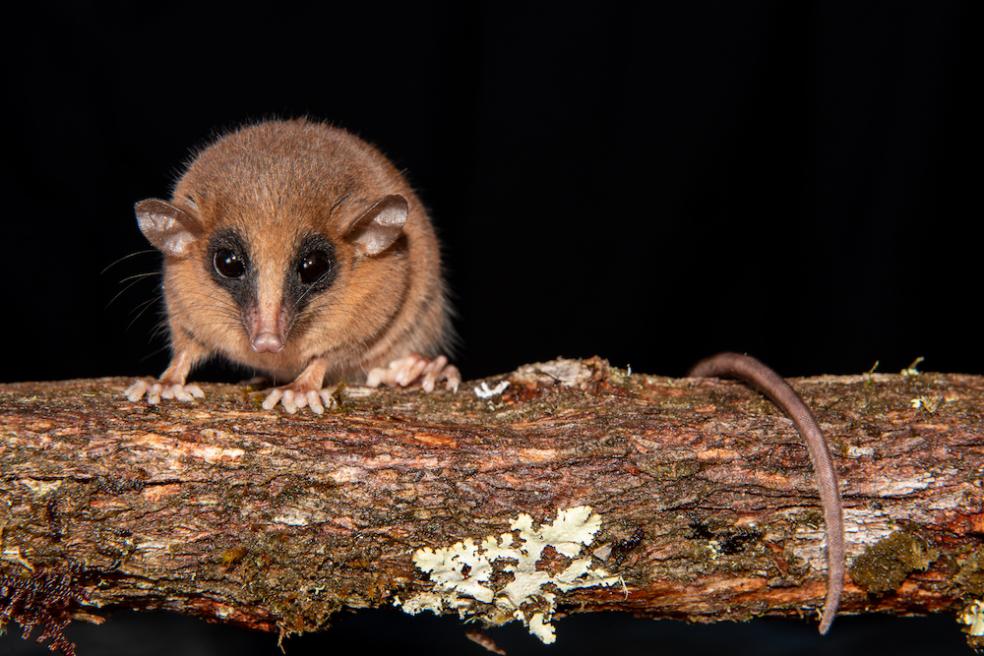
At the time, lead researcher Cal Poly Humboldt Biological Sciences professor, Silvia Pavan, was searching for a mysterious (still unnamed) species of squirrel. What she found instead was a new species of opossum, never before described by science. Their discovery and research was published in June in American Museum Novitates.
The small mammal, a species of mouse opossum found near an archaeological site on the eastern side of the Andes, has reddish-brown fur, distinct mask-like markings on its face, and a total length—including body and tail—of up to 10 inches (the body alone measures only about 4 inches). It was found at an altitude where other species of this genus are not typically found.
“I realized immediately that this was something unusual,” Pavan says.
“We know very little about this species, including its natural history and distribution, and only one specimen has been collected so far,” she said.

To confirm it was a new species, the team studied its DNA and physical features, focusing on distinctive traits such as the elongated snout and delicate body. That process takes several years. Scientists had to be absolutely certain it hadn’t already been documented, carefully comparing the specimen with others in museum collections—sometimes across different countries and continents—and running extensive lab tests, including DNA analysis. Only after all this work, they confidently confirmed that this was a species new to science.
Pavan and her team named the opossum Marmosa chachapoya, in honor of the Chachapoya culture, which inhabited the region prior to Inca and European colonization.
The Marmosa chachapoya isn’t the only new species discovered during the expedition. The team collected several others—including a new semi-aquatic rodent—which have yet to be formally described, Pavan said.
These discoveries are particularly significant for biodiversity and conservation efforts, Pavan explains, underscoring how much remains unknown about the biodiversity of this region. The findings also suggest that it’s home to more species yet unknown to science, many of which could be vulnerable without protection, Pavan explains.
“It’s a reminder of the critical importance of scientific exploration and conservation in areas like Río Abiseo,” Pavan says.